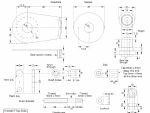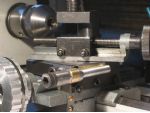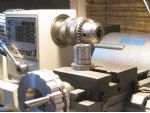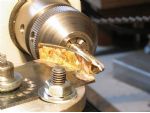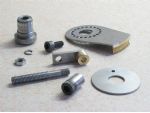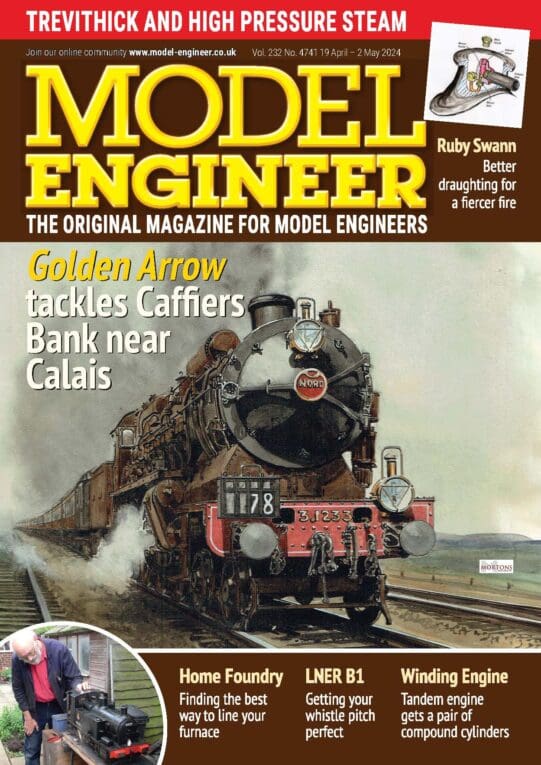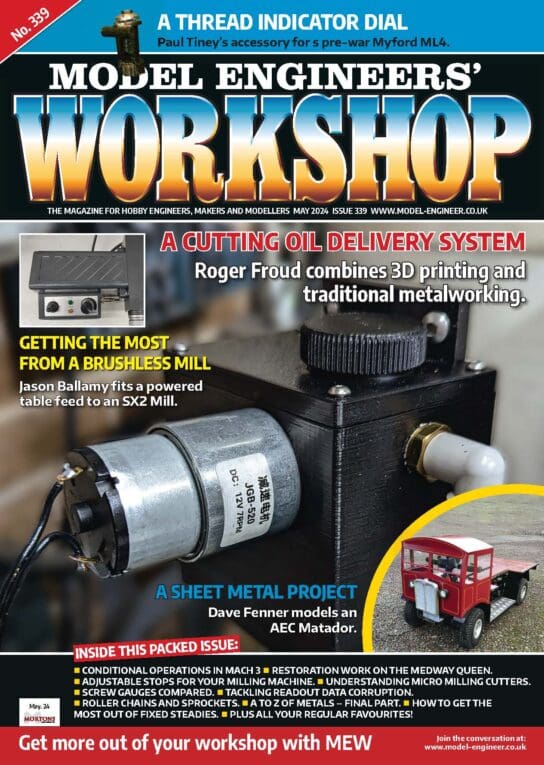Sometimes I wonder whether the time spent in making a time saving device is equal to, or more than the time one would have spent, struggling on without it, but having made a the device, its use often makes a job that much easier. One thing that can be time consuming is the setting up for the cutting of a taper, such as that for a drill chuck, where an adjustment, finer than a protractor can give, is needed in setting the topslide.
Enjoy more Model Engineer reading in the monthly magazine.
Click here to subscribe & save.
Described is an assembly that can be left in situ, or quickly attached whenever the need arises, photo 1. Although mainly intended to replace the need to ‘tap’ the cross-slide until the correct setting is found, by working from a fixed point and using the attachment’s feed screw, an accurate angle may be found more easily.
This is only a matter of counter-boring the centre of the pivot point to a suitable depth and pressing the new bush into place. Although not a true quadrant, the word is being used as a name for the carrier, a plate having a geared section to its edge. The quadrant is set between the cross-slide table and the top-slide with the locating pin set into one of the holes. The feed screw engages with the geared section of the quadrant to give a fine adjustment within the chosen sector, prior to locking the top-slide. A single screw on the front face of the cross-slide secures the feed screw bracket and a locating pin ensures the correct position.
The first item required for the construction of the quadrant, is a spigot, photo 2, the base of which is of a diameter to fit the recess or counterbore of the cross-slide table where the top-slide would normally pivot. A short section of the top of the spigot is also of the same diameter and of a length equal to the gauge of the steel to be used for the carrier plate plus a couple of thou. The middle section is made to fit snugly into the bore of the lathe faceplate.
For the quadrant, cut a piece of 18g steel slightly over-size and mark a centre for the pivot point. Set the plate on the faceplate and from the rear of the faceplate, align the mark centrally with the faceplate bore and clamp the two together using three short screws nuts and washers. Place the assembly on to the lathe spindle, drill through and finish using a boring tool until the top of the spigot will turn in the hole without play. While still on the lathe, scribe an arc where the outer edge of the gear is to be fixed. Remove the faceplate and mount it on the index attachment to drill the ring of twenty holes for a locating pin. Remove the carrier plate and deburr the back of the holes.
Cut and bend a piece of 1/8in brass to a close fit with the arc of the carrier and silver-solder into position. File away the excess plate down to the brass, then with the spigot through the faceplate centralise the blank on the faceplate and re-mount on the lathe spindle to take a ‘cleaning’ cut from the brass.
For the feed screw, a length cut from a long screw was used. The section for the bearing and 5mm thread was turned between centres, for accuracy. The feed wheel dial or control knob is simply a short length of rod, drilled and tapped 5mm at one end for attaching to the feed screw, followed by a lock-nut (turned down from a standard nut). The other end is tapped to take a 6mm socket head screw giving finger control by the knurl. The socket, to take a wrench, is used should the top-slide ever be set at such an angle as to cover the feed screw.
Division marks and numbers are optional and although peculiar will be of a set value and unique to the individual construction. At least one mark will be required when the number of turns of the feed screw is to be counted. Using trigonometry and knowing the total length of the arc to which the quadrant is turned will give a closer value, whatever it may be, to each division.


